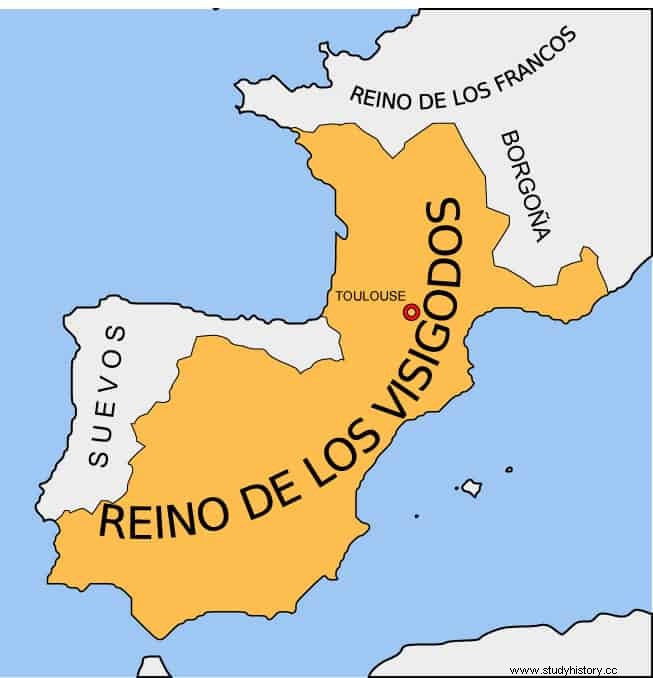At the beginning of 418, Walia reached a decisive agreement with the imperial government for the Visigoth people . In exchange for military support in Hispania and against insurgent movements in the interior of Gaul, the Visigoths were authorized to settle in the province of Aquitania Secunda and in certain places in Novempopulania and Narbonensis Prima, that is, basically in the Atlantic part of the lands between the Loire and Garonne rivers. The Visigothic king, Theodoric I (418-451), who completed the transfer to the Gaita territories once Walia died, did not receive any title that would enable actions on the Gallo-Romans. In theory, two administrations were established, although progressively, in practice, Visigothic power became global and extended to all the inhabitants of the territory .
Settlement of the Visigoth People
The Visigothic aristocratic groups took over land in the settlement areas, mainly around Tolosa, which had become the seat of the monarchy, and in the Garonne valley. The refereed procedure, the hospitalitas , came from late-imperial regulations for the lodging of troops in transit, who occupied, in variable proportion to the rank of each soldier, a stipulated part of the houses of the populations they passed through in their adaptation to the sedentarization of the Visigothic people. This meant the delivery of two-thirds of the cultivated spaces and a portion of the surrounding forests and wastelands, as well as the slaves, a partition that did not affect all the owners, but probably the largest ones, who obtained advantages from an agreement that freed them from the taxation of said land, while at the same time guaranteeing the safety of others in times of growing instability.

Evolution of the social organization of the Visigoth people
The settlement and delivery of land consolidated and accentuated the process of social differentiation that had existed for a long time in the Visigoth people . The distribution of real estate was not generalized, but limited to the groups that had obtained primacy in the social group. The control of the land and, therefore, of the means of provisioning, was a final and decisive element of the breakdown of the primitive gentile solidarity, since the majority far from the distribution began to depend for their subsistence on the transfer of land or of the agrarian work offered by those who held the means of production. The distribution of booty or the direct provisioning of the Romans, none of them, of course, egalitarian, had given way to a structural inequality derived from land ownership. All this process also reinforced the political power of the monarchy, undoubtedly one of the great beneficiaries of the acquisition of farms. , consequently, reinforcing it. The Visigothic aristocracy was approaching its Roman congeners, while the peasantry was nourished by diverse groups from the Visigothic or imperial world (settlers, small landowners, slaves, urban plebs). The integration of both communities took place within each social level, a class agglutination that, among the Visigoths, progressively replaced the remains of the old gentile solidarity.
